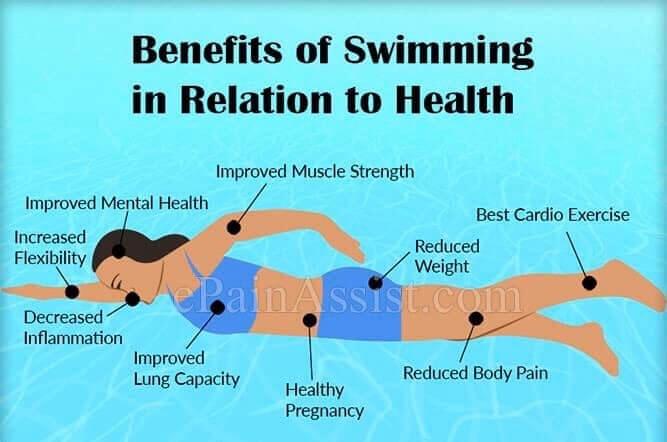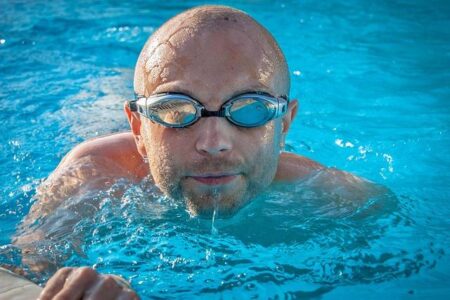A growing body of research highlights an unexpected classroom ally: swimming. As schools and parents seek innovative ways to enhance student performance, evidence suggests that regular swimming not only boosts physical health but also sharpens cognitive abilities, leading to improved academic outcomes. From increased concentration and memory retention to reduced stress levels, swimming emerges as a powerful tool in fostering both mental and physical well-being among students. This article explores how making waves in the pool can ripple into success in the classroom.
Cognitive Boosts Swimming Provides to Enhance Learning and Memory
Engaging in swimming regularly triggers a cascade of neurochemical responses that empower the brain’s capacity to absorb, process, and retain information. Studies reveal that the rhythmic breathing and full-body coordination involved in swimming increase oxygen flow to the brain, promoting the growth of new neural connections. This physiological enhancement leads to improved memory consolidation, sharper focus, and a heightened ability to solve complex problems-key attributes for academic success. Moreover, swimming stimulates the production of brain-derived neurotrophic factor (BDNF), a protein fundamental to learning and cognitive flexibility, enabling students to adapt more swiftly to new academic challenges.
Beyond biochemical benefits, swimming cultivates mental discipline and stress resilience, critical for effective studying and information retention. Students who swim report better management of anxiety and increased alertness, both of which translate into improved classroom performance. The table below summarizes the cognitive gains linked to swimming and their direct impact on learning outcomes:
| Cognitive Benefit | Impact on Learning |
|---|---|
| Enhanced Blood Flow | Faster information processing and recall |
| Increased BDNF Levels | Better memory formation and neural plasticity |
| Stress Reduction | Improved focus and reduced test anxiety |
| Improved Coordination | Strengthened executive functioning and multitasking |
Physical Fitness Through Swimming and Its Impact on Student Performance
Engaging in swimming offers students a unique full-body workout that enhances cardiovascular health, muscular strength, and endurance without putting excessive strain on joints. The low-impact nature of swimming allows for a consistent fitness routine, making it accessible for all fitness levels. Beyond physical health, swimming improves coordination, balance, and flexibility, crucial elements that support overall physical development during formative academic years.
Recent studies have highlighted a direct correlation between regular swimming and improved cognitive functions, including better concentration, memory retention, and stress reduction. These physical and mental benefits often translate into heightened academic performance. Below is a comparison showcasing how consistent swimming practice affects key performance indicators in student life:
| Benefit | Before Swimming | After 3 Months of Swimming |
|---|---|---|
| Concentration Span | 30 minutes | 45 minutes |
| Stress Levels | High | Moderate |
| Physical Endurance | Low | High |
| Academic Performance | Average | Above Average |
- Enhanced focus leads to more effective study sessions.
- Reduced anxiety promotes mental clarity during exams.
- Improved sleep quality boosts memory consolidation.
Incorporating Swimming Into School Curriculums for Academic Success
Integrating swimming lessons into the standard school curriculum offers more than physical benefits; it directly correlates with enhanced cognitive performance and classroom behavior. Studies show that students who participate regularly in aquatic activities demonstrate increased concentration, improved memory retention, and a boost in creative problem-solving skills. The rhythmic nature of swimming promotes the development of neural pathways responsible for focus and mental clarity, which are critical components in academic success. Schools adopting aquatic programs have reported measurable improvements in test scores, particularly in subjects requiring sustained mental effort such as mathematics and language arts.
Key advantages of swimming in educational settings include:
- Enhanced cardiovascular health leading to greater energy levels and endurance during school hours
- Reduced stress and anxiety contributing to a positive learning environment
- Development of discipline and time management skills through routine training
- Increased social interaction and teamwork fostering communication skills
| Benefit | Academic Impact |
|---|---|
| Improved Focus | Higher test scores in reading and math |
| Stress Reduction | Fewer behavioral issues and absenteeism |
| Enhanced Energy | Improved classroom participation |
To Conclude
In summary, the evidence is clear: incorporating swimming into students’ routines offers more than just physical benefits-it plays a significant role in boosting cognitive function, concentration, and overall academic performance. As schools and communities seek innovative ways to support student success, promoting access to swimming programs could be a strategic move with far-reaching impact. The ripple effects of this simple exercise may well extend beyond the pool, shaping healthier, sharper, and more resilient learners for the future.





